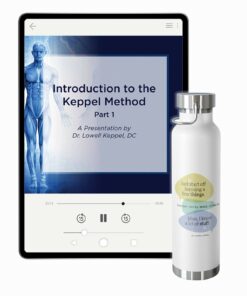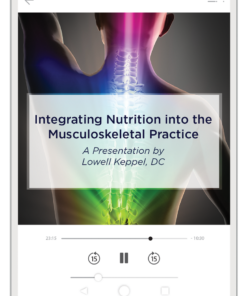Enjoy the latest installment of Dr. Lowell Keppel’s “Good to Know” series for practitioners.
“The patient’s guess is always the best one, but it may not be the correct one.” Those are the wise words of one of my mentors, Dr. Scott Walker, DC.
I always make it a point to listen to my patients when they try to explain what is happening to them. Many times, they’ll give me the clues I need to find the issue. More often than not, they Googled their symptoms. Yes, I know—here we go with Dr. Google! But hear me out. Between the patient and Dr. Google, I may discover something I never thought to check on. I happen to know there are doctors who will Google symptoms or conditions during a visit with the patient to find treatments or drug recommendations.
Many years ago (and I mean many, lol), one of my patients had sinus issues that my recommendations were not resolving. Based on her research into chronic sinus issues, she asked me if the problem could be related to yeast. So I muscle tested yeast and voilà, there it was! I recommended Lactic Acid Yeast from Standard Process, and her sinuses started clearing up.
But online research can also come up short. Another patient reported high blood calcium levels. She did her own research and told me there were only two reasons this would occur: hyper-parathyroid issues or bone cancer. She was so concerned that she went to the endocrinologist to have her parathyroid checked. It was within normal parameters. The next week she had an appointment with the oncologist to check for bone cancer.
When I asked if her research cited any other reason for high blood calcium, she said no. This is a problem with online information—not all of it is available, and certainly not all of it is accurate. We know there is another reason for high blood calcium—too much vitamin D. Let me repeat that—too much vitamin D! (Here is a brief overview of hypervitaminosis D. For a more in-depth review, see the January/February 1963 issue of Dr. Royal Lee’s Applied Trophology newsletter.)
I explained to my patient that too much vitamin D could also be a cause of high blood calcium levels. (Now was my chance to educate her about vitamin D with the articles I linked above.) Based on our conversation, I learned she was using too much vitamin D, and she was not taking any vitamin F. It was time to cut back on the D and start using Cataplex F to move the calcium out of her blood and into her tissues where it belongs.
I then asked her if she was getting muscle cramps, and, of course, she said yes. She had too much calcium in the blood due to the D. Meanwhile, she didn’t have enough calcium in the tissue due to the lack of vitamin F. After she took the Cataplex F, her blood calcium levels reduced to normal and her muscle cramps went away.
(Oh, my patient also believed she had symptoms of bone cancer based on her reading. The power of suggestion! Once her doctor confirmed there was no bone cancer, the patient was at ease.)
One final thought about the importance of listening to your patients. Many of my own clients have told me that their doctor doesn’t listen to them. Sometimes they just don’t take the time. Worse, sometimes they think the patient is, let’s just say it, stupid.
I never assume people are stupid, especially when they’re trying to explain unusual conditions. If they’ve already looked into their symptoms, it’s likely they know more about their odd condition than I do. So I don’t pretend I know. Instead, I’ll ask them: “Tell me what you learned.”
Build rapport with your patients. Take a few extra moments to listen, and pay attention to the clues they reveal. This is how you learn how to help them. Your patient retention, and results, will improve. And, of course, RESULTS REFER!
Image from iStock/monkeybusinessimages.





